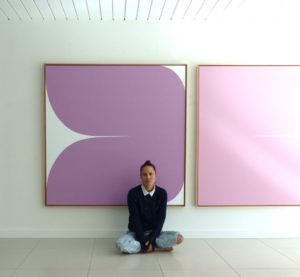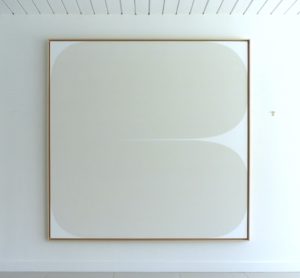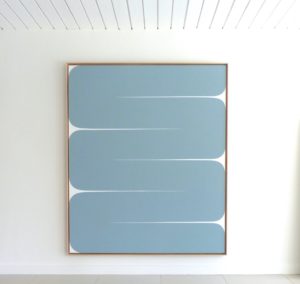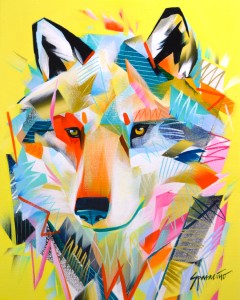Dear Artist,
A survey conducted by artists’ emergency fund Artist’s Relief found that 95% of the artists who responded have lost income due to the pandemic, on average, about $27,103.00. The coalition of seven U.S. arts grantmakers and their co-presenter, the non-profit Americans for the Arts has discovered that 62% of responding artists have become fully unemployed because of COVID-19. A startling 66% are unable to access the necessary resources to do their work and 80% of them do not have a plan for recovery. The survey, launched on April 8th, 2020, initially provided unrestricted emergency relief grants to artists and has since updated its questionnaire to continue tracking the economic realities facing artists in 2021.
In the meantime artists, trying to survive along with galleries, museums, art fairs and so many other cultural spaces (if they have the means to even do it) have been forced to adopt a thing called an Online Viewing Room (OVR.) An OVR is really an extension of the old-fashioned photo slide. It just happens now online and includes other contextual features: installation views, light sources, 3D modeling, video tours and in its fanciest form, digitally enhanced or totally simulated immersive experiences not possible In Real Life (IRL.) This is all in an effort not only to continue to create and offer aesthetic experiences but to find new ways to market them.
If you haven’t already tried OVRs, the easiest way to begin is to take a photo or video of your artwork in situ and post it on social media. OVRs don’t try to mimic the aesthetic experience of visiting a gallery or studio, but rather to create a new kind of aesthetic experience that strives to provide an alternative route to soul-stirring. How does one do that? It depends on who you’re trying to reach. Consider your creative life, your work and environment, the slickness or simplicity of your ideas, process, product and its message. Try to build upon and enhance that energy in your new, second medium — the OVR. To those in it to make a profit, a glossily-lit photo of a bag of money hanging on the wall should do better than, say, a virtual reality low-tide land art experiment. Remember though, that the OVR world, like IRL, needs more than just what can be merchandised.
Mega galleries like David Zwirner and PACE and art fairs like Frieze, Basel, FIAC, Art Busan and Taipei Dangdai, along with creating slick and pricey OVR experiences have also experimented with old-school collaborative and collector-friendly approaches like price transparency and ghost booths — where scrappier galleries can still have a presence at a fair, for example, without travelling, insuring and staffing. Many galleries report that OVRs have encouraged the discovery of new work and that collectors have stuck with them through the pivot. This new art world, real or otherwise, is staying alive. Hopefully because of this, artists will, too.
Sincerely,
Sara
PS: “Hard times arouse an instinctive desire for authenticity.” (Coco Chanel)
Esoterica: Now that we’re a year in and some of the novelty of OVRs has worn off, artists and galleries are taking stock of their new lives as photographers and coders and deciding how they might one day return to IRL while holding onto what they learned from OVRs. Social media has been a lifesaver to many, providing affordable global marketing, collecting imagery on a few platforms and gathering and democratizing accessibility to art and design professionals, collectors and creators. One day, we may all meet each other in person. Personally, as a maker of IRL art, I’m in the IRL camp, though I can’t dispute the immeasurable value of OVRs during this time of stay-at-home and beyond. We will probably never, ever go back to pure, IRL-only art consumption, though wouldn’t it be wonderful to just go to the beach?
 “Best keep yourself clean and bright; you are the window through which you see the world.” (George Bernard Shaw)
“Best keep yourself clean and bright; you are the window through which you see the world.” (George Bernard Shaw)
My IRL exhibition, Shelter in Place continues at Winston Wachter Fine Art, 203 Dexter Avenue in Seattle, Washington. The paintings are actually, physically there and you can be with them in person, by appointment until March 13th.
Featured Artist
The way that I interpret what I see
is my Way.
I paint, because it’s the most satisfying way that I’ve found
to be myself.
Fish swim.
Birds fly.
I paint.
Boldly.
On canvas,
with acrylics.








15 Comments
perhaps a computer could come up with more ideas in the same pattern.
Thank you for the article. Your work is very slick, crisp and meditative. I like it. Thank you for sharing.
I wonder if Canada has done any similar research?
Perhaps CARFAC might know?
http://www.carfac.ca
‘Canada’ is a country. It is not a person or an arts-oriented organization. The question you should really be asking is: “I wonder if anyone in Canada has done any similar research?” Frankly, I doubt it. P.S. I had never even heard of CARFAC untill today. Go figure.
John if you were a professional Canadian painter you would have it is decades old.
Thanks for your research and thoughts, Sara. While I do appreciate the wide audience that can be reached with the OVR, I also miss the IRL. There is a lot of nuance that is missed in the OVR, definitely in my small and delicate watercolor landscapes and most probably in your larger and bold works too. In my experience, it’s much more difficult to get people to engage with your work without the evidence of the human touch.
I was just reading an article about this pivot to OVRs by galleries and artists in the New York Times and I like the new term that has come out of it called “phygital” which is I think where art viewing is going. Nothing beats being in front of physical art, unless you can’t get there or it is irresponsible to try. I had the good fortune to launch my full-time art practice online in 2010, mostly through Twitter at the time. This resulted in immediate international online followers, fans and sales and many of those art collectors are still following today. In the summer of 2017, I opened a small physical gallery just for my own work after having shown in other venues and galleries since the mid 90’s. Basically, I needed a permanent kind of showing space and a lot less of dragging and shipping work around. The result was a a seamless interaction or “phygital” kind of engagement that surprised even me. I would have art collectors first see work online and then come in to make a final decision or come in and then ask if I had something specific they were looking for and I would turn my large view iPad around on my high desk and they would stand in the physical gallery and make a selection from the online gallery. I would then tell them to give me 20 minutes and I would go to the home studio and pick up the work and bring it back for them to see while they went for a coffee. This worked so well, that I decided to add another physical room to the gallery in February last year and represent the work of other landscape painters along with my own. Then the pandemic hit. Both gallery rooms were closed even before the second room’s renovations could be completed. I thought, that is it. My art business is toast! In fact, for the whole of the 2020 year, the number physical gallery visitors were less than 20% of the previous year. For a brief period during the summer, I had both gallery rooms open for walk-in visitors with protocols in place and mostly by appointment. By fall, it was mostly by appointment only. Yet, I kept curating group shows in the new gallery room and solo shows in the original gallery room and showing everything in as high a quality as I could online. I did videos, individual Zoom, FaceTime visits. I added a whole new digital gallery platform (by invitation only) with Artsy at the end of July. And I kept up with my usual and regular social media post on Facebook, Instagram and Twitter plus the gallery every second Friday newsletter. It was hard work! The learning curve was steep because I was not only keeping up my own painting practice in a restricted environment, learning new digital tools and protocols for viewing work in the physical gallery because of the pandemic but I was learning how to best curate and represent the work of other artists while living and working and showing art on a small island off the southwest coast of Canada (not exactly the center of the global art world). You would not be alone in thinking it was a recipe for disaster! Some nights were more than a little restless as I figured out ways to scramble forward over a moving art market terrain. But I had good strong digital social media legs underneath me. I had saved to do the physical expansion and was glad I took the risk into a blind future to complete it. I still feel like I am trying to see through heavy fog and can only clearly see the next step in front of me and must guess at the rest. I still feel like I am working right at the very edge of my capacity both as a painter and a gallery owner. However, sales revenue was up more than 50% last year over the year before. Personally, I paint and released and sold more work than the year before. I love using OVRs and digital room views to show the scale of paintings and how one might live with them. I love having physical gallery space to show work. I love representing the work of Other carefully selected landscape painters whose work is in line with the gallery’s vision. Both digital and physical viewing of artwork will stay I believe as we move forward and hopefully I can soon see more clearly where we have ended up and farther out on the horizon to expand the stretch of the gallery’s strategic plans beyond the end of my brush. One never knows though. I am just certain that I must try. I must continue to be bold and flexible. Any less than this and I would regret it. So I encourage us all to find ways to to say “yes” to change in that work for us. It is scary. No question. But not to try would be the worst.
Thank you for sharing your strategies. Keep on finding success in your art and sales!
You are most welcome Carole. I have had so many artist friends who were hit hard this past year with physical galleries closed that didn’t have a strong online presence. It is heartbreaking but I believe most will find a way forward even though it will be new and different than before. I feel a keen sense of responsibility to share whatever is working (or not working) to help us all navigate these uncertain and unusual times. There is nothing I would like better than to see Sara Genn’s paintings in person, along with the work of so many others. But it is not likely to happen anytime soon, not just because of the pandemic but also because of the distances I would need to travel to see the work in person. If it wasn’t for online, I would only get to see such work if it was published in a hard copy magazine or book. We would miss out on these immediate exchanges without such things as The Painters Keys twice weekly publications. It is not an “either or” but rather a “both and” I think.
Terrill you are so spot on! Instead of flailing around, I created a studio space next to a coop gallery, incorporated myself, and kept painting large and small. As you said about hard work, it pays off. I am selling from the mini studio/gallery, online, and am still painting all shapes and sizes of work. One gallery where I worked in a rented space has seemed to lose its edge, but by moving on, I feel as though I am developing both art and business skills.
Excellent Mary! Seems to me you have a plan forward, even if only for now. Those business skills will serve you well no matter what opportunities come your way. Many artists I know are indeed working extremely hard and I have seen some outstanding work. The thing is that when all your usual systems, and channels for presenting your work get knocked sideways it sometimes takes a while to determine how or what to do instead. Then it takes a while longer yet to establish those new methods and options before one becomes skillful and familiar with the new approaches. All this takes a LOT of creative energy that is being used at least partially to navigate a pandemic. It is a big ask for creative beings to just motor on but reinvent their whole way of navigating their access to art sales. Galleries are also going through the same transformation and we are all fumbling and tumbling onto online platforms at the same time, if we were not already there that is. So good for you for finding a corner of the art market world that is working for you. Congratulations! In this changing environment it is not something to take lightly. Now, to keep our eyes and ears open for the next possible best step….NFTs anyone? ;)
One of my hens died in my hands yesterday. It really put everything in perspective as I watched the light leave her eyes and I walked right into the future with her. My path is as hers. None of us are getting out of here alive. Could there be a better way to look at all this? “Devine Guidance” is but for the asking. Thoughts become things. Hard work beings results, but choose wisely what your time is used for. There is no going back, we are all on this journey to the future together. Hold tight artist people. It’s going to be one wild ride.
Thank goodness for OVRs and the ease of shopping online. Thank goodness for avid art collectors who support the artists in any way they must during these horrid and frightening times. Lot’s to be thankful for. Mask up and keep painting!
Would love to see “Mare” in person. The pic intuits something happening in the nuances…. So lovely.
I have resisted the OVRs and still am not familiar with social media etc. So I just paint, and work, and paint. The inventory is building up and no one gets to see it. Last month I gave away 16 paintings to family members.